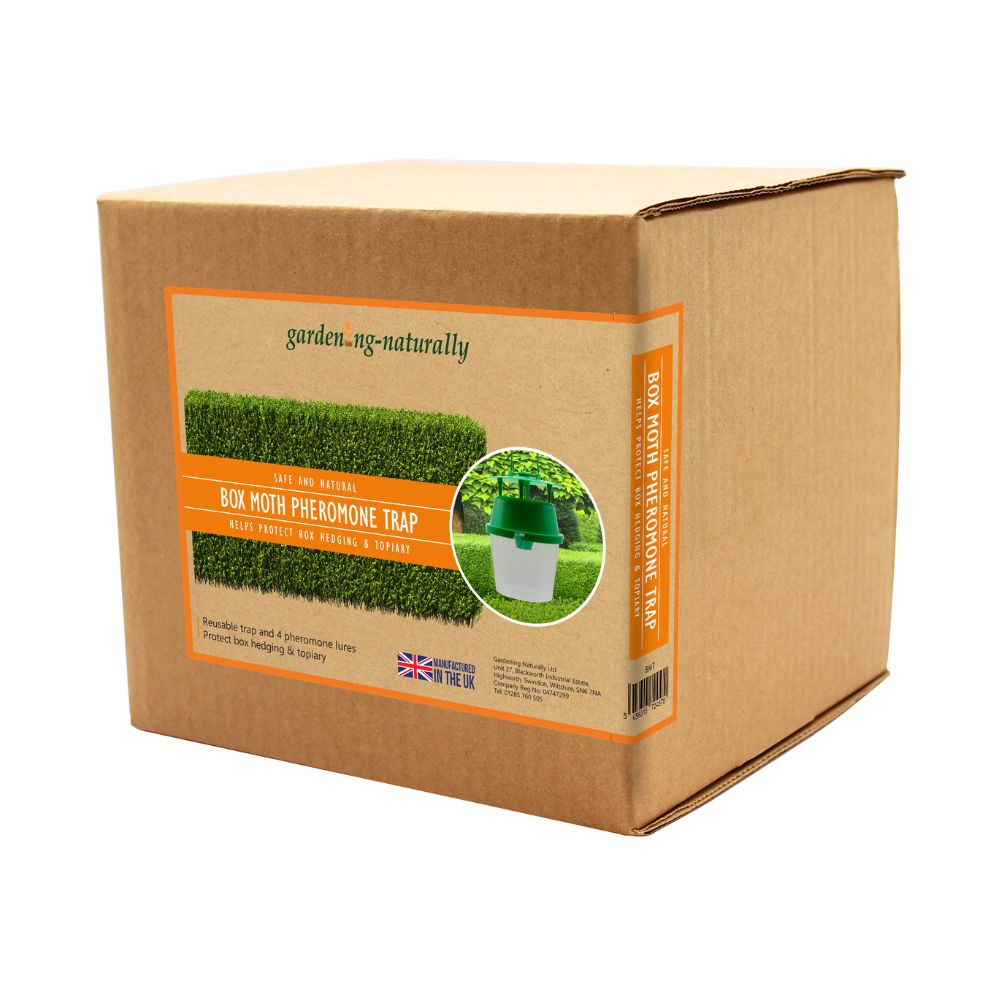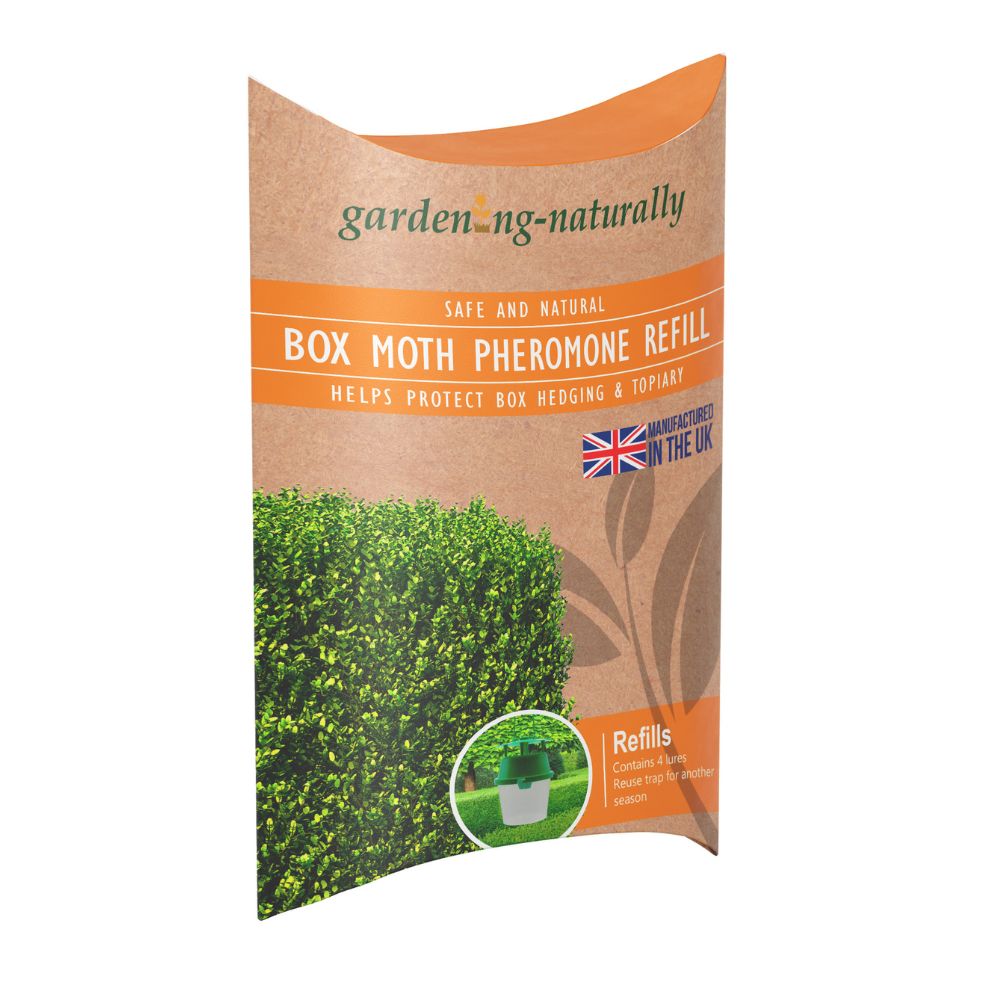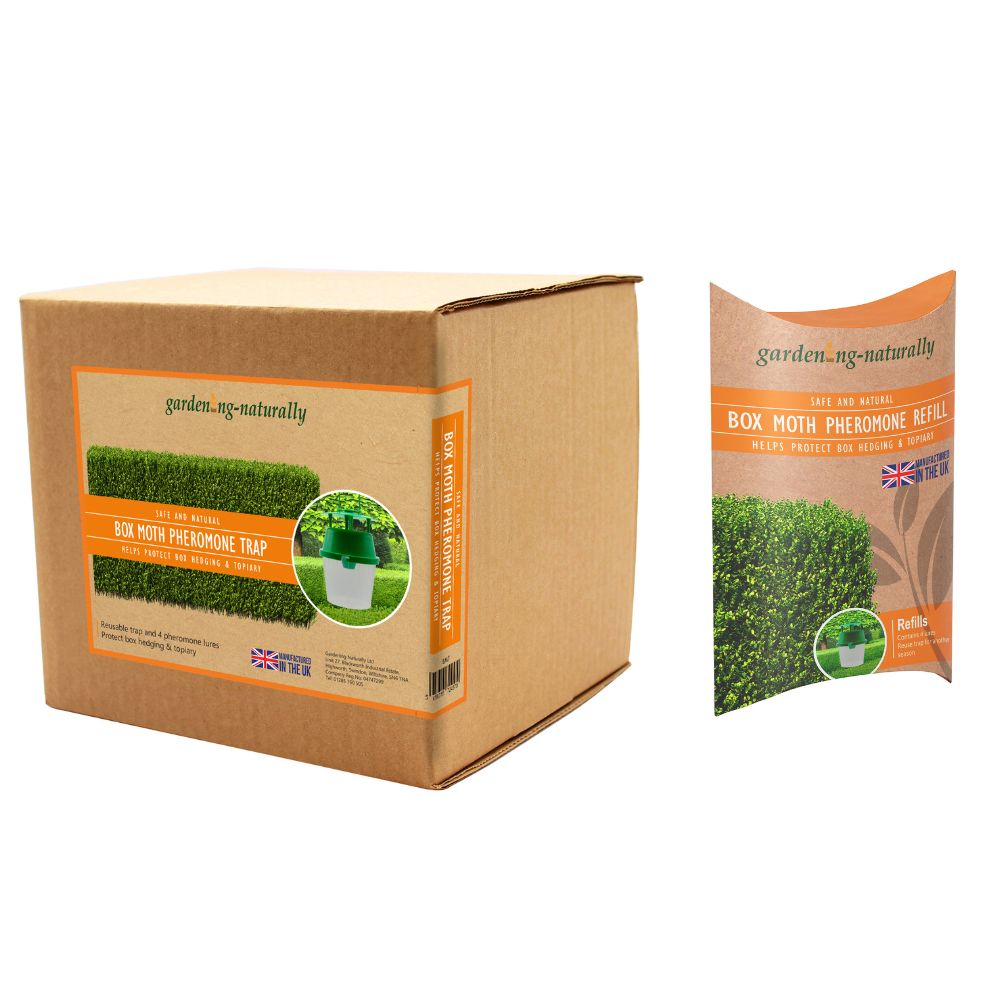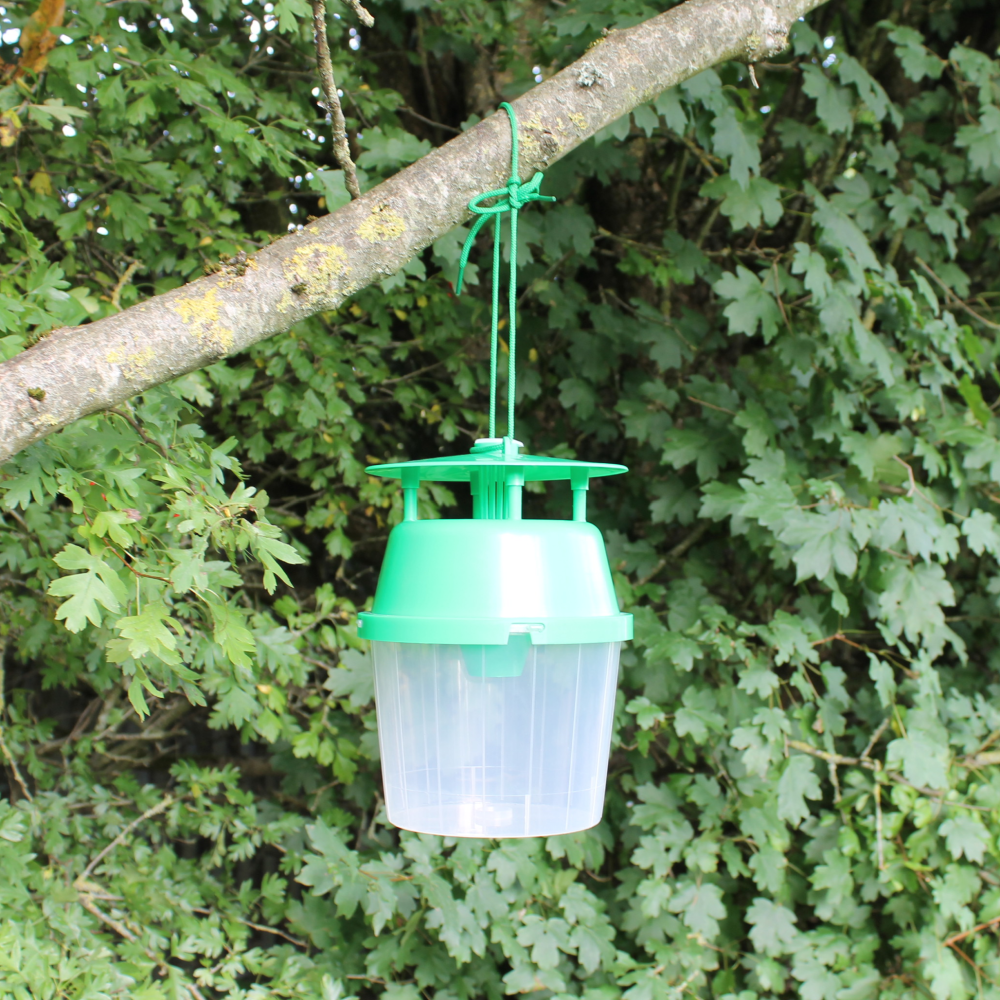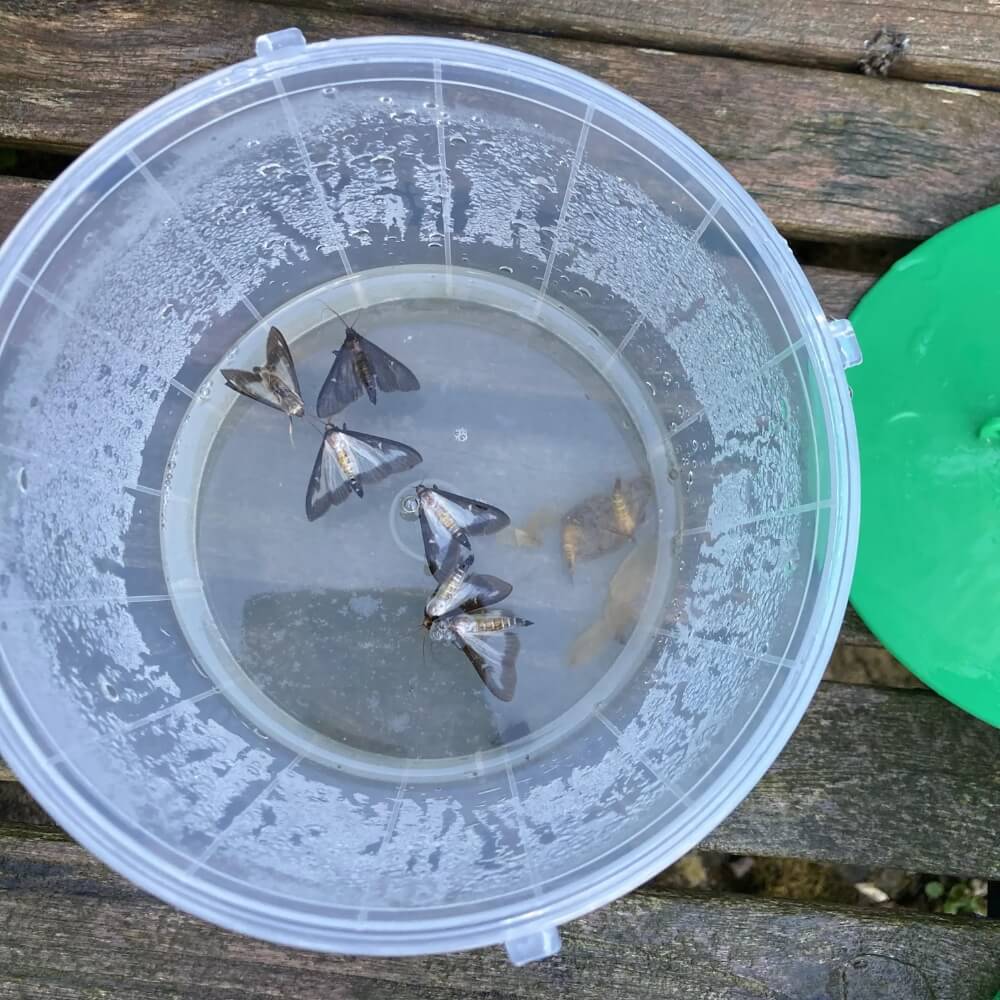Box Tree Moth Traps and Refills
Box Tree Moth Traps and Refills - Trap is backordered and will ship as soon as it is back in stock.
Combat box tree moth infestations early with this targeted box moth treatment system. Designed to attract and capture adult moths, this trap helps reduce box moth populations before box moth caterpillars begin feeding on box hedges. Each trap works with pheromone lures that last up to five weeks, making it suitable for long term box moth monitoring and control.
Available options:
- Trap: 1 funnel trap + 4 pheromone lures
- Refill: 4 pheromone lures
- Trap and Refill: 1 trap + 8 pheromone lures
This system is suitable for repeat seasonal use. For additional treatment, consider using box moth nematodes as a follow-up solution.
How and When to Use the Box Tree Moth Trap
Install traps outdoors near box hedges or any susceptible plant by mid March and continue until October. Moth emergence times vary depending on seasonal and regional conditions. Mount traps 1.5 to 2 metres above ground in open spaces for best performance.
Pheromone lures attract male box moths, interrupting the breeding cycle and reducing egg laying. For large gardens or areas of land, use the recommended 4 traps per hectare or 1 trap per 0.5 acres.
Box MothTrap Maintenance and Lure Handling
To prepare the trap, add 5cm of water and a drop of detergent to the bucket. Replace pheromone lures every 5 weeks for consistent results. Empty the trap weekly to prevent buildup and odour from captured insects.
Lures are sealed in individual foil sachets. Store unused lures in a cool location, away from sunlight or heat. Only open when ready to use. Do not pierce the capsule — simply place it into the cage on the trap lid.
Box Tree Moth Life Cycle
The box tree moth (Cydalima perspectalis) lays its eggs on the underside of box leaves. Once hatched, the box moth caterpillar feeds on leaves, causing visible defoliation and plant stress. Caterpillars form webbing tents to hide and protect themselves from predators. Pupation occurs within the host plant, and the adult moths emerge soon after. Several generations can occur each year, especially in warmer conditions, making continuous monitoring crucial from early spring through to autumn.
Frequently Asked Questions Box Moth
What is the best time to place box tree moth traps?
Install traps by mid March and maintain them until October to monitor box moth activity across their full breeding season.
Where should I place box moth traps for best results?
Position traps in open areas near box hedges at a height of 1.5 to 2 metres for optimal coverage and moth capture.
How many box moth traps do I need?
Use 1 trap per 0.5 acres, or 4 traps per hectare, depending on the severity of infestation and size of the area.
How often do I need to change the pheromone lures?
Replace lures every 5 weeks and ensure the trap is emptied weekly to keep it effective.
Can I reuse the box moth trap next season?
Yes. The refill pack allows you to reuse the original trap for another season by adding new pheromone lures.
Reviews
Reviews
How To Use
How To Use
Box Moth Trapping Season: Place traps in an area by mid-March and continue until October. It should be noted that the exact time of insect emergence will vary with location and seasonal variation.
How and When to use the Box Moth Traps: Traps should be placed in an open area where the plants susceptible to attack are being grown. The traps should be mounted at a height of 1.5 to 2 metres above the ground.
How Many Box Moth Traps Do I Need?:The current recommended density is 4 traps per hectare; this density is subject to change depending on location and severity of the moth.
Use of Lures: Do not try to open or pierce the capsule; just place it in the cage on the trap lid. Dispose of the sachet and used lures well away from the trapping area. Store lures in a cool place away from direct sunlight and heat and do not open until ready to use. Always store lures sealed in original packaging and do not open until you need to use. They will last for 2 years when unopened.
Trap Servicing and Change of Lures: Add approximately 5cm of water with a drop of detergent into the trap bucket. Lures should be changed every 5 weeks. The funnel traps should be emptied weekly to avoid the trap filling and repellency from putrefaction of the caught insects.
Instructions for use:
1. Add water to a depth of 3cm with a small dash of washing up liquid into the bucket of the trap.
2. Attach the funnel to the bucket by aligning the slots on the funnel with the tabs on the bucket and twisting to lock together.
3. Attach the lid to the funnel by aligning the 4 inserts in the lid with the 4 pegs projecting from the top of the funnel. Carefully push the pegs into the holes so that the lid is fully attached.
4. Open one sachet which includes one lure and remove the lure (we recommend using gloves). Remove the cap off the lure cage and place the pheromone lure inside. Refasten the cap.
5. Push the lure cage through the hole in the lid from above so that the cage effectively hangs below the lid.
6. Thread the supplied hanging cord through the two tab-holes on the lid and tie at both ends.
7. Position at a height of around 1.5m – 2m hung either from box trees or a suitable structure such as a post. If traps are placed in trees, ensure that the entrances remain unblocked and free from leaves.
8. Check the traps on a regular basis; at least twice a week. Top up the liquid in the bucket to the 3cm depth as and when required. Lures should be changed every 5 weeks to achieve optimum results.
More Information
More Information
This moth is a native of East Asia and was first reported in UK gardens in 2011. An important pest of box plants (Buxus spp.), larvae feed on leaves and in severe infestations can cause defoliation and dieback. Currently established in southern England, late instar caterpillars produce webbing ‘tents’ to protect themselves whilst feeding. Early detection and control are necessary as this webbing makes effective control difficult.
Species Name: Cydalima perspectalis
